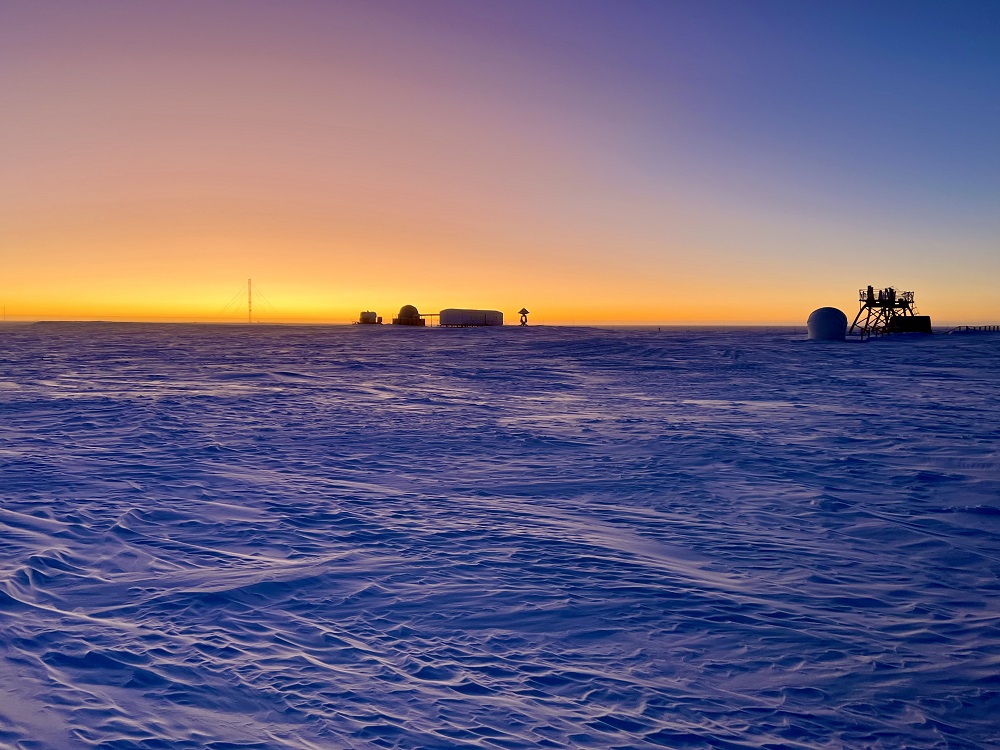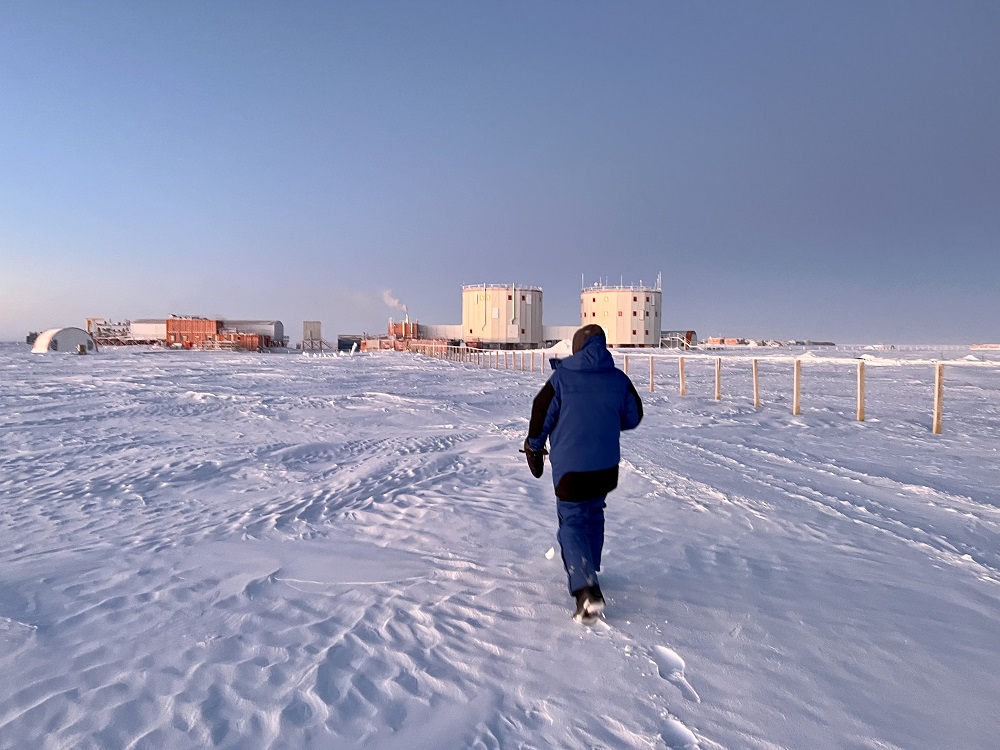A few days ago, I accompanied Damien on one of his outings.
Damien is one of our two glaciologists (there are a French and an Italian ones). Well… he is not originally a glaciologist: he is a cryogenic systems engineer. He is the only one of us working here in a warmer « environment » than his usual professional « environment »!
(In fact, none of the overwintering scientists are really working in their original field of expertise. Why not? Because all the experiments are set up in summer. The job of the wintering scientists is to maintain the installations, to collect the data and to transmit them. So you have to have a good scientific background but not necessarily be a specialist in the specific field).
Twice a week, Damien has to go to the « Clean area » to take samples. This is a large area, access to which is prohibited in order to preserve the purity of the snow.
But before going out, you have to cover yourself up because it is -64°C and, as there is a bit of wind, the windchill is -81°C.
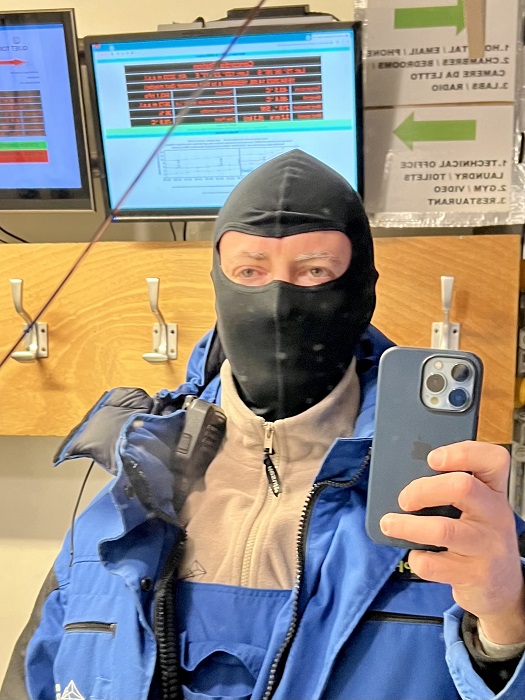

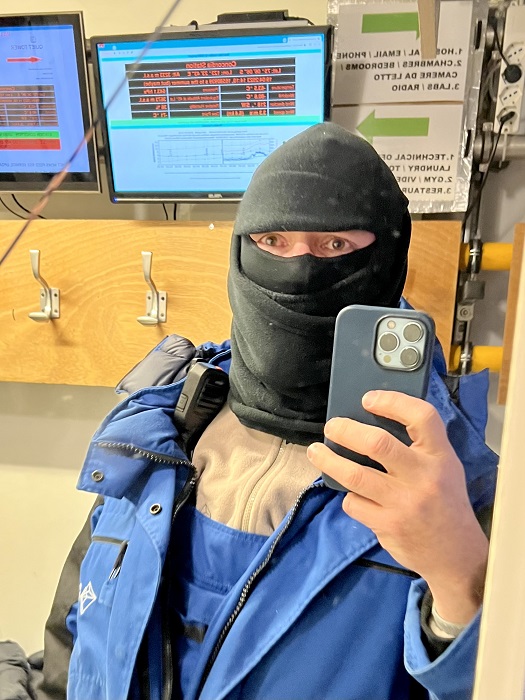

Damien tries on a mask lent to him by Vincent. It is supposed to limit the problems of fogging in the mask.
It makes especially nice breathing plumes.
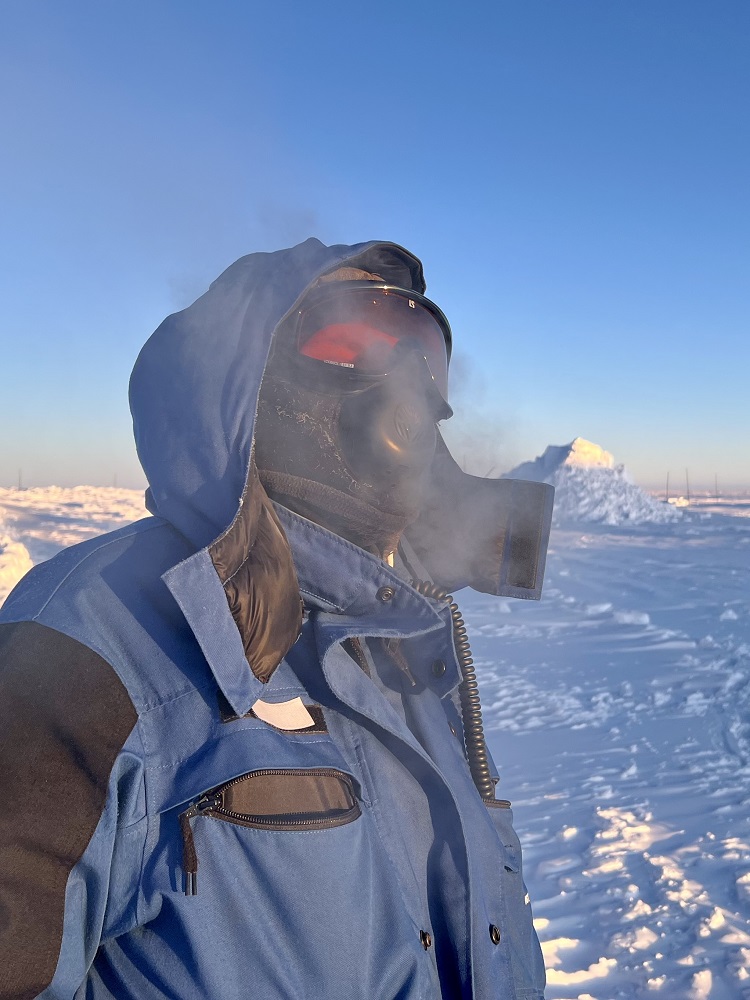
It is 2.20 pm, the sun is already setting behind « Astro shelter ».
And after 15 minutes of walking, we arrive at « Atmos shelter ».
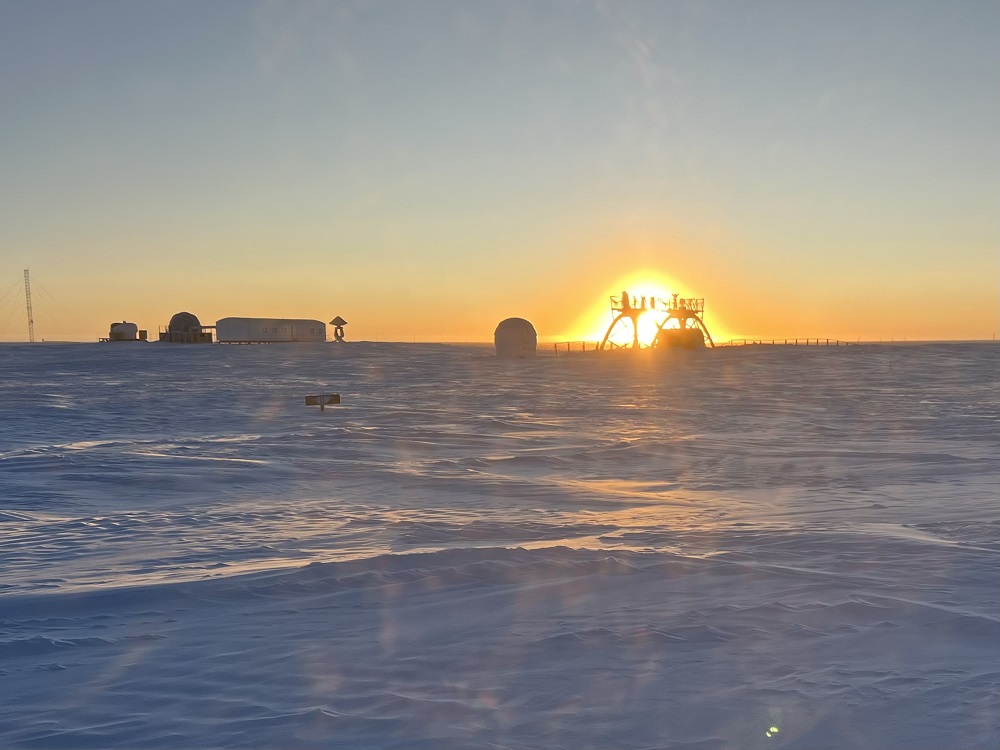
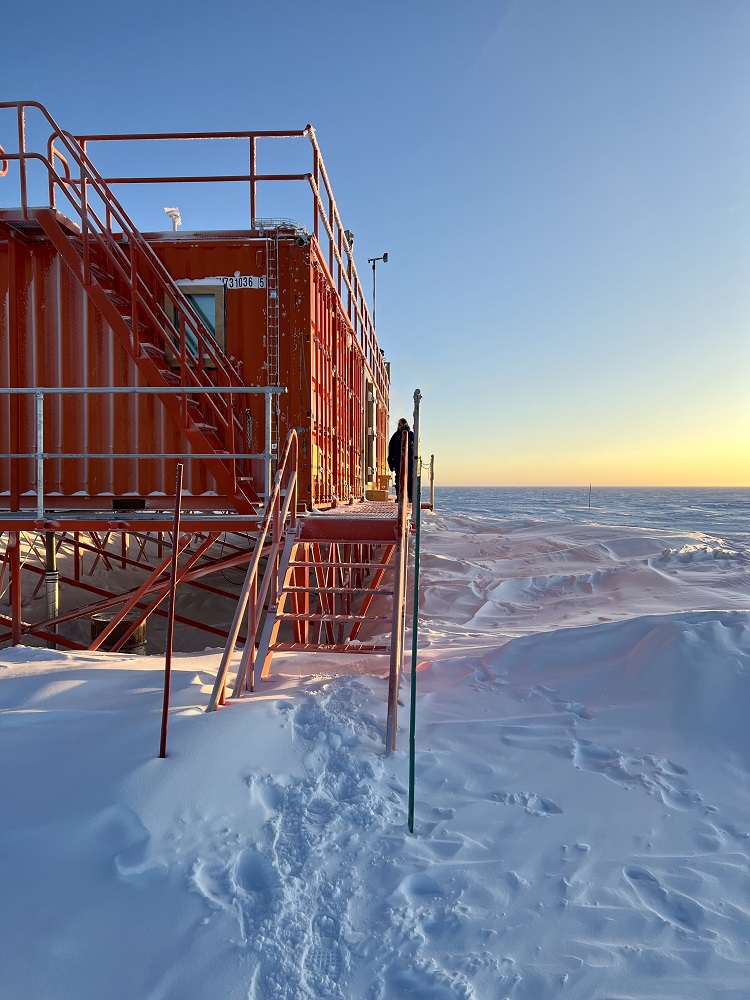
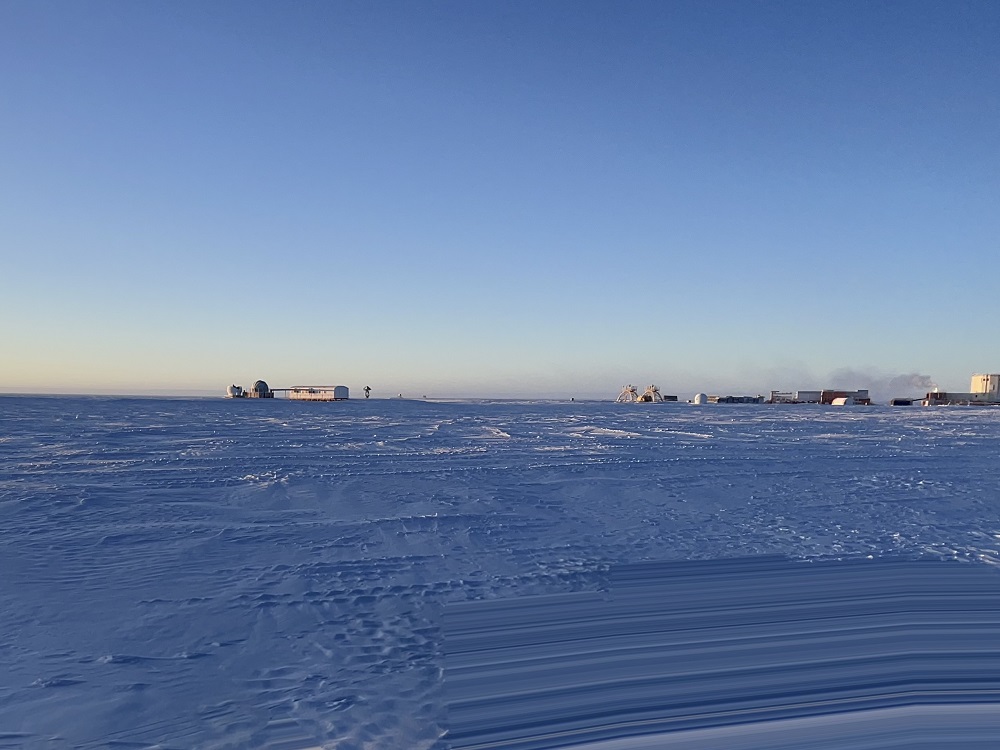
Despite the anti-fog conscientiously applied before leaving, I am almost blind when I arrive.
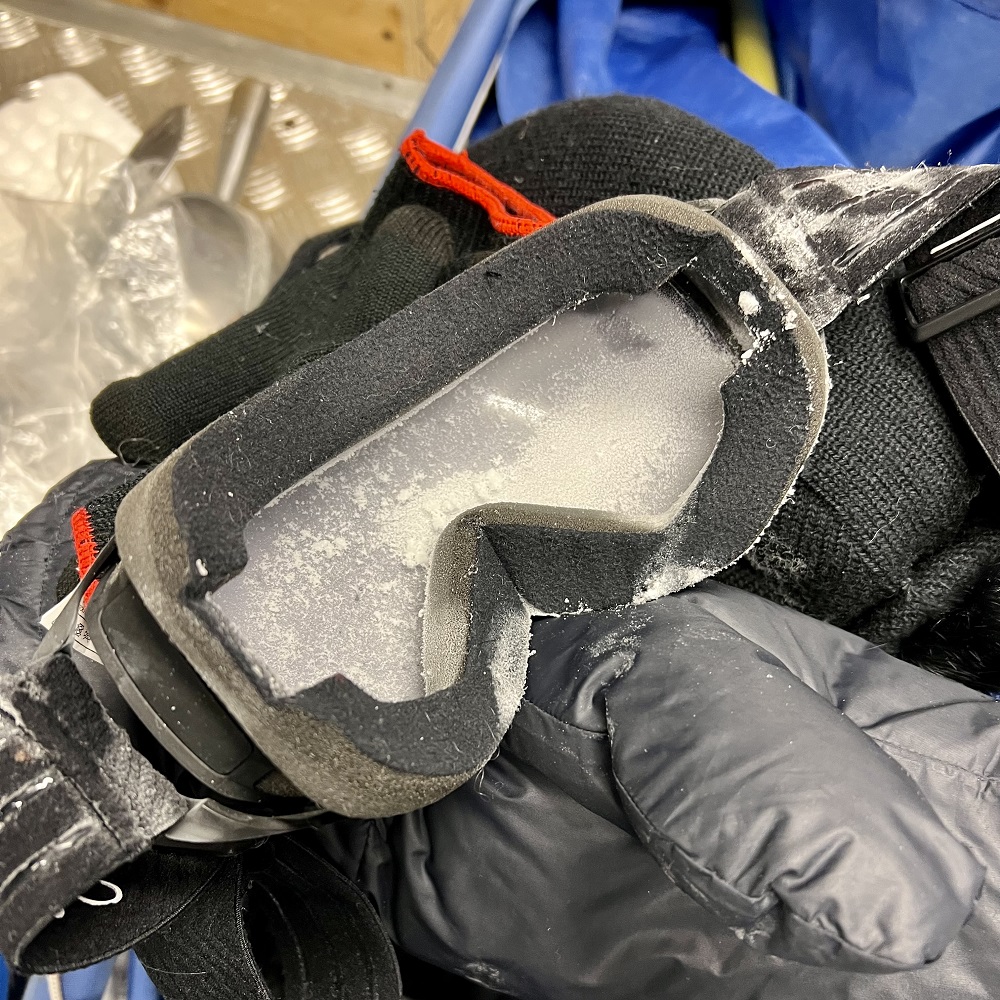
A short break in the warmth, the time for Damien to do some manipulations and prepare the tubes and bags necessary for the three different types of samples he has to take today.

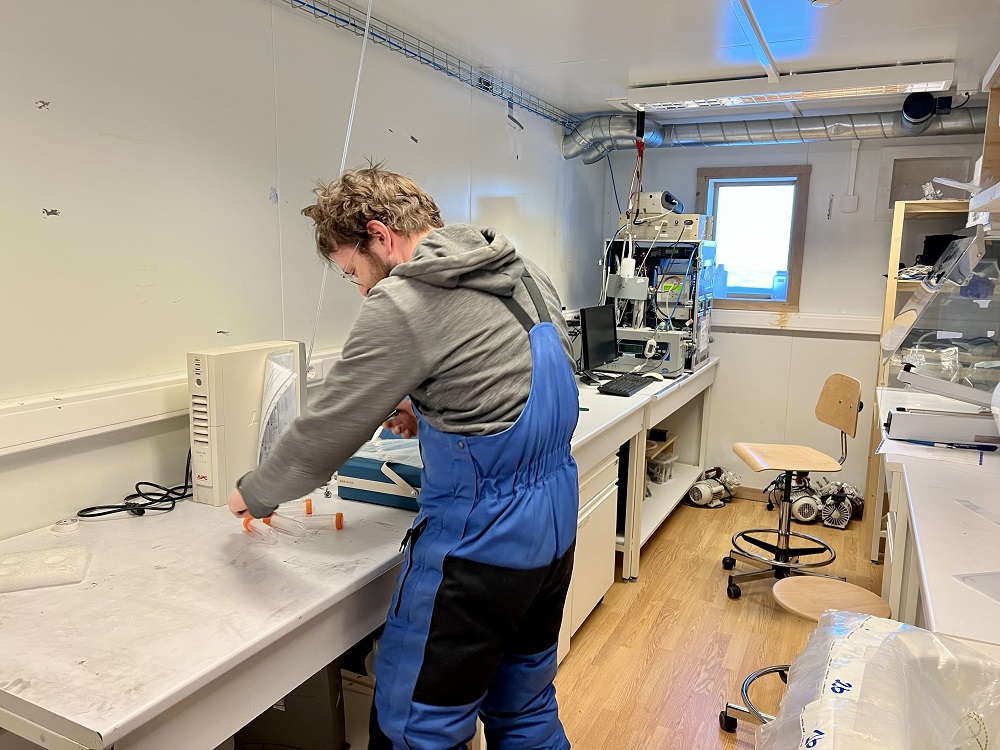
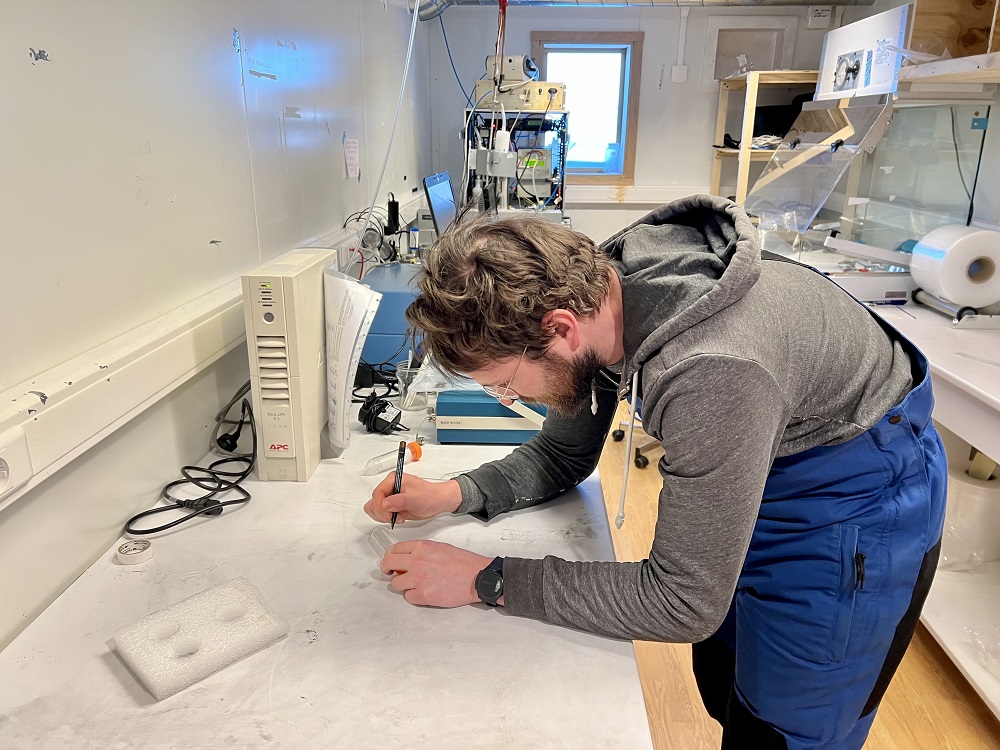
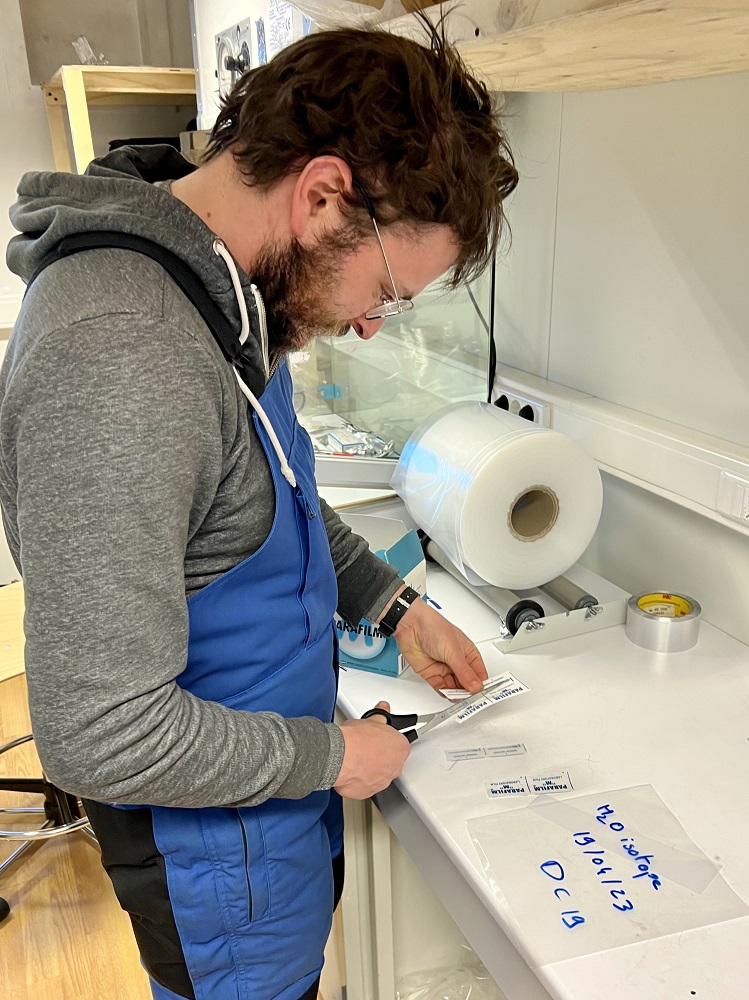
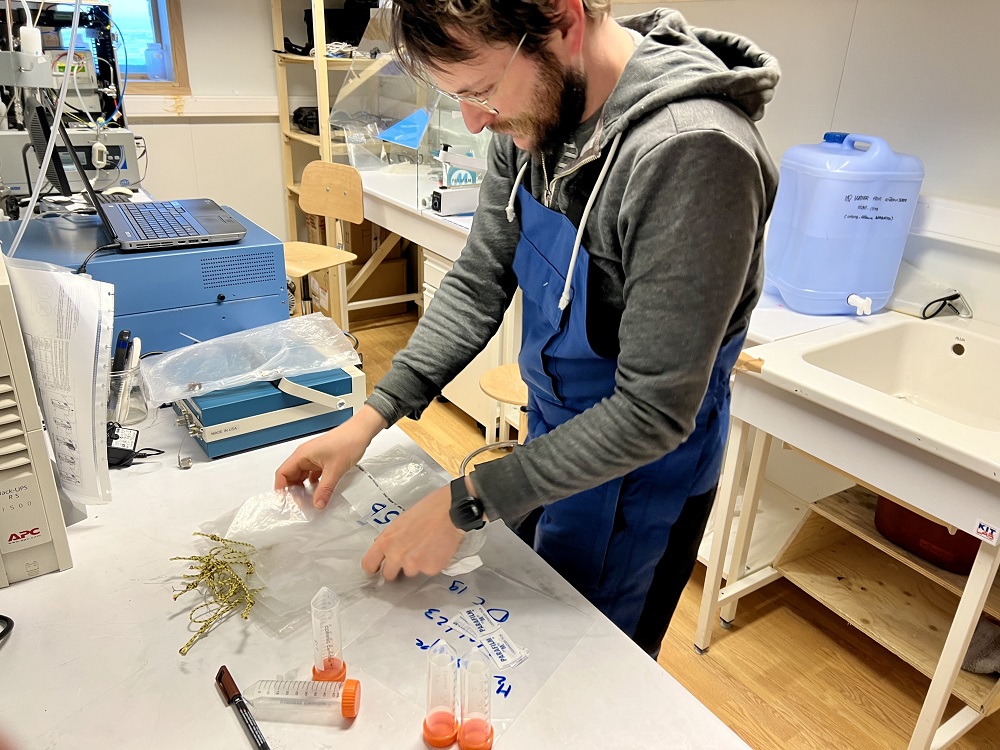
The first samples are of nitrates and sulphates from the atmosphere, which are deposited with the snow. As long as you don’t pee in the snow (!), there is no real risk of contamination and they can therefore be taken directly next to the shelter. Their results will be correlated with the atmospheric ozone measurements made by one of the shelter’s machines.
The most superficial layer of snow must be recovered. To do this, Damien starts by scraping the surface with a DIY shop spatula and recovers the small ridge thus formed with a candy shovel! (As is often the case here, we have a mixture of ultra-precise high-tech and DIY elements… but it works!)

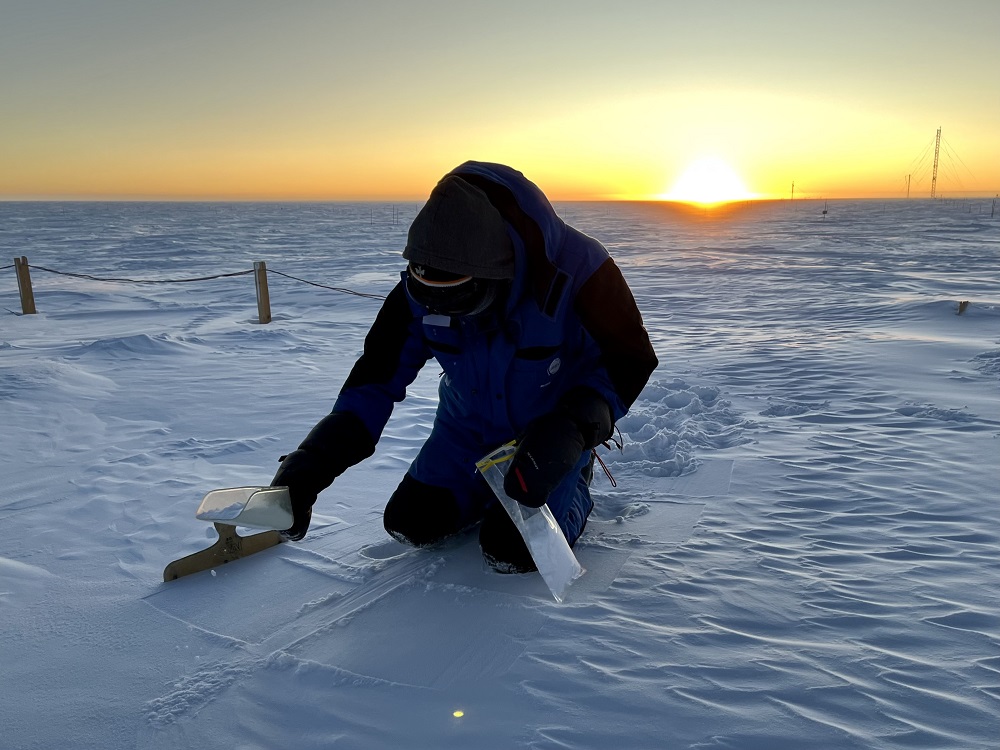
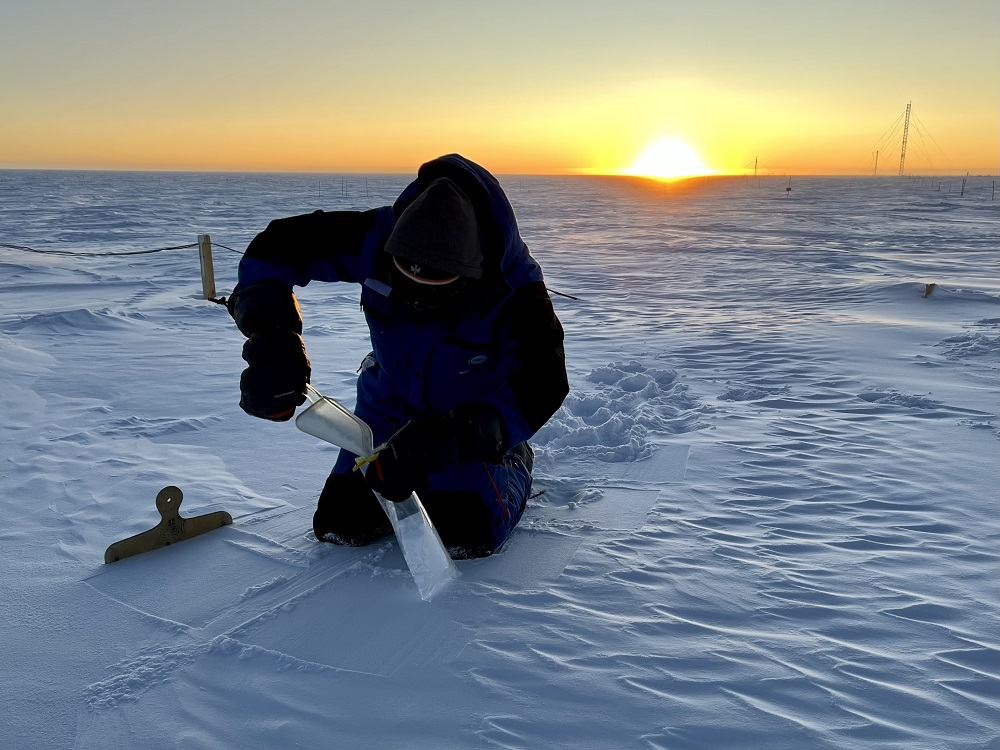
It is time to go to the Clean Area. We follow a path marked out by stakes, from which we must not deviate.
At each round of sampling, Damien puts a marker and the next round will be done 10 steps further. This year it’s on the left side of the path, last year it was on the right.
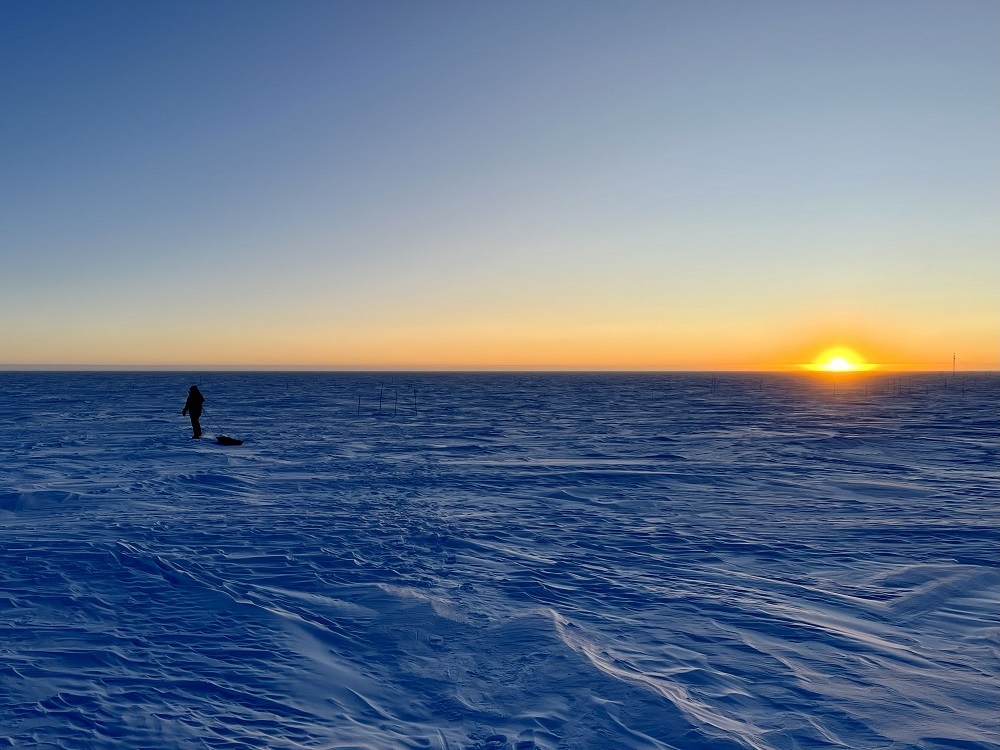
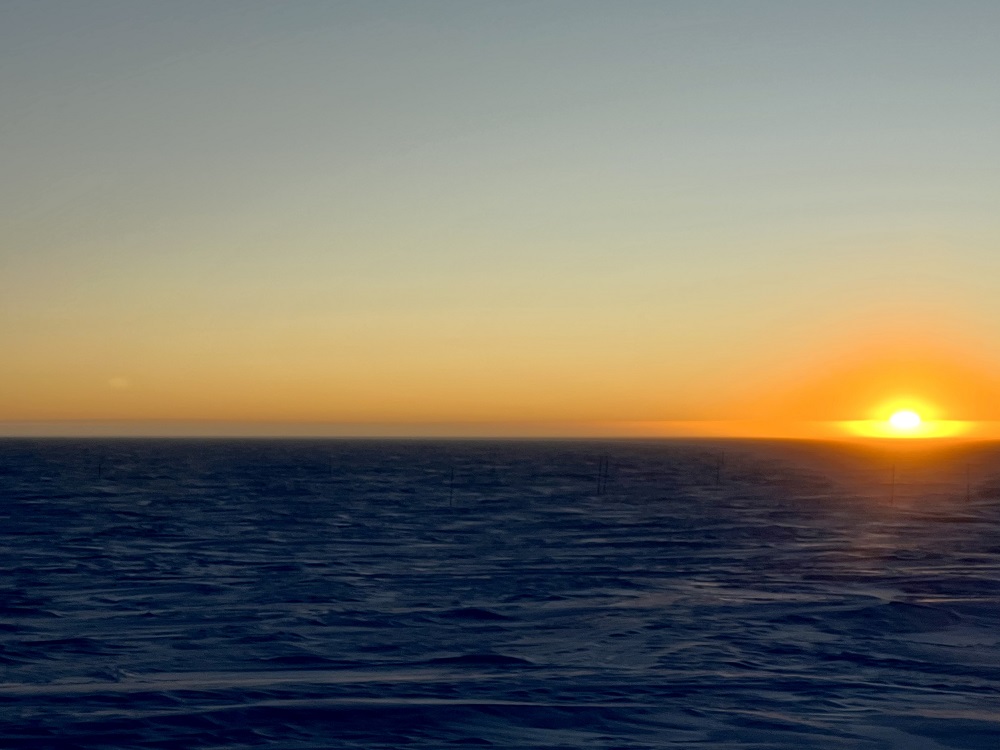
Once he has arrived at the day’s marker, Damien sets off at right angles to take five pairs of samples every 10 steps. These samples are intended, on the one hand, to study water isotopes and, on the other, to measure the density of the snow.
For the latter measurement, a small hole must be dug and then two samples taken (at the surface and at a depth of 7 centimetres) using a small probe whose volume is very precisely calibrated (when the snow is too compact, the hammer is needed to push it in!)
The density can change considerably within 10 steps and, for the first time since his arrival, one of the samples was not possible because the surface was so hard.
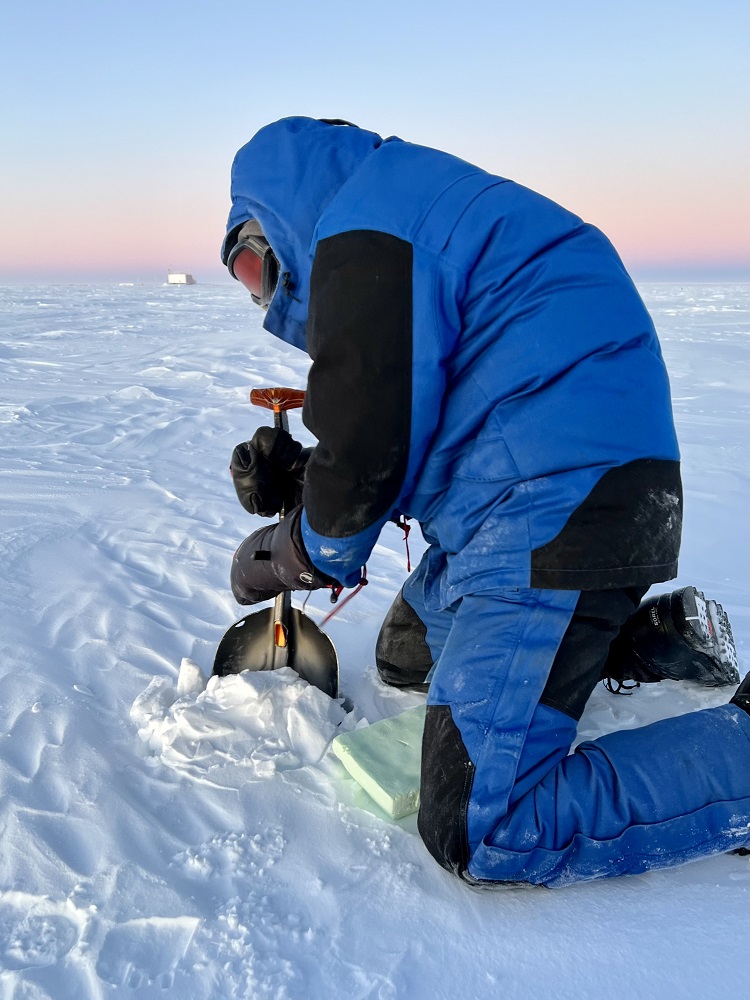
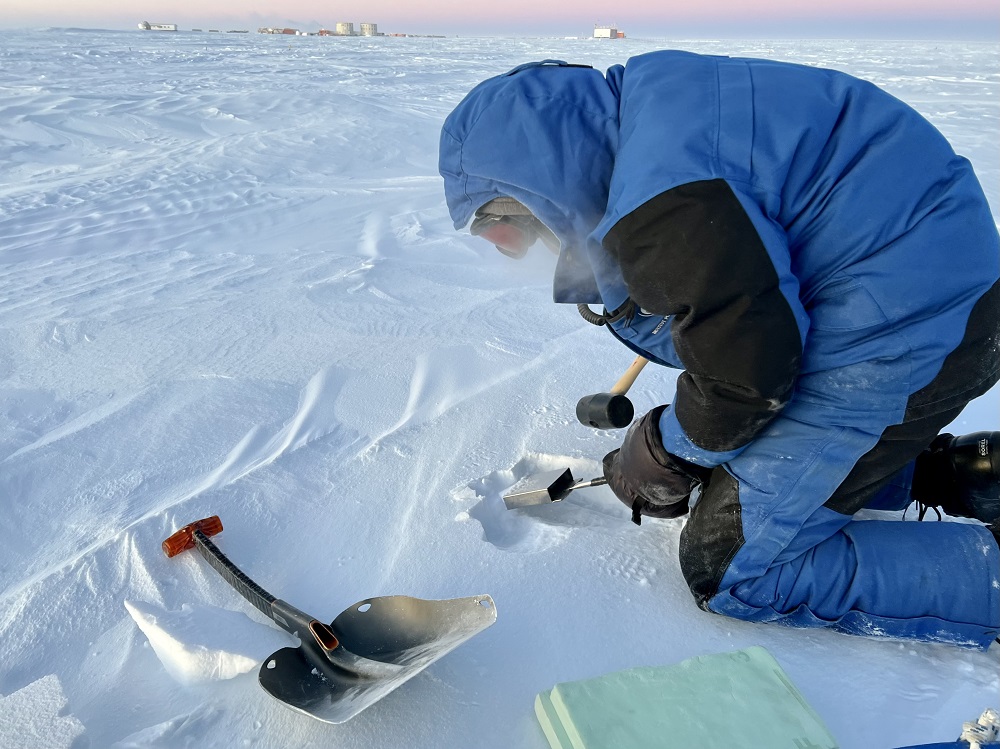
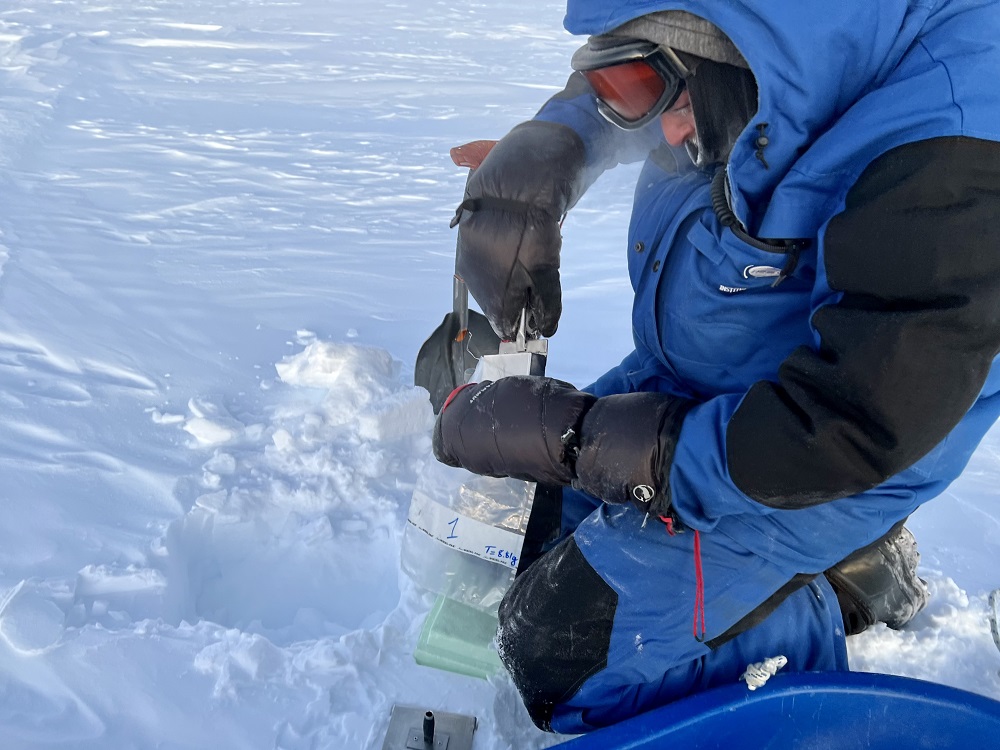
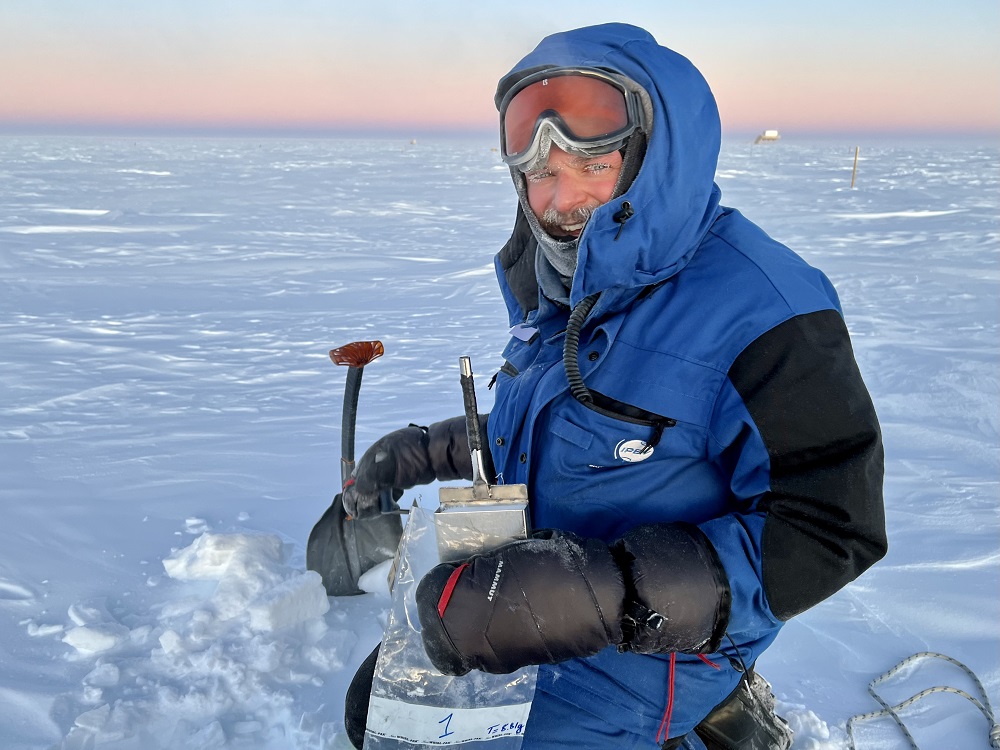
After half an hour, the sampling is finished, the sun has gone below the horizon and it is really cold. It is time to return to the shelter.
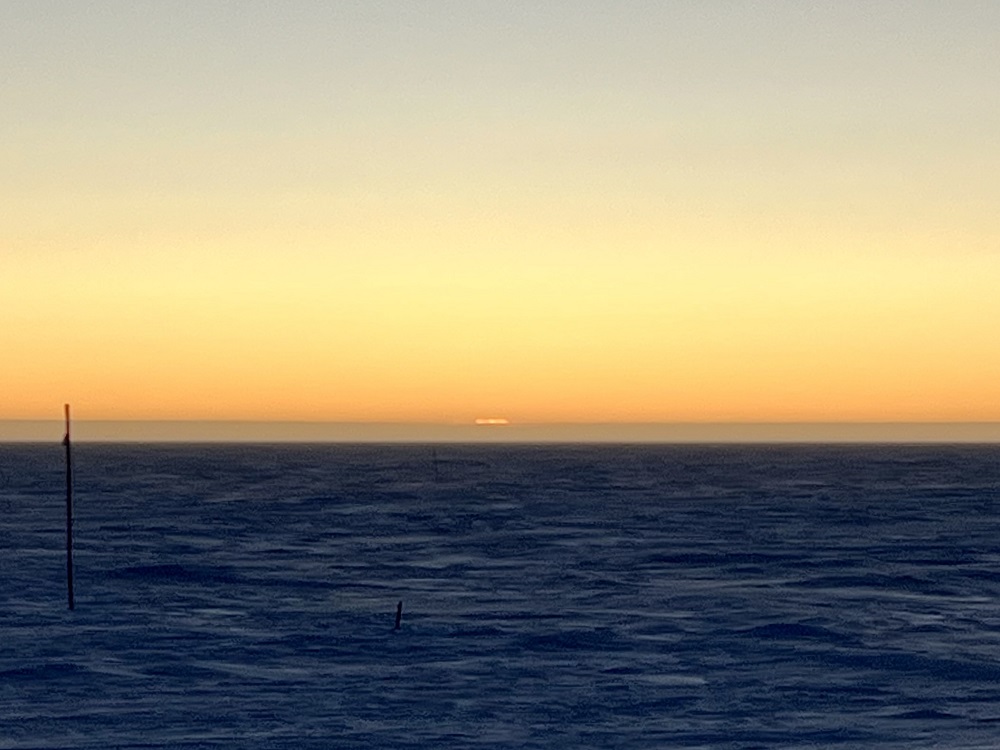


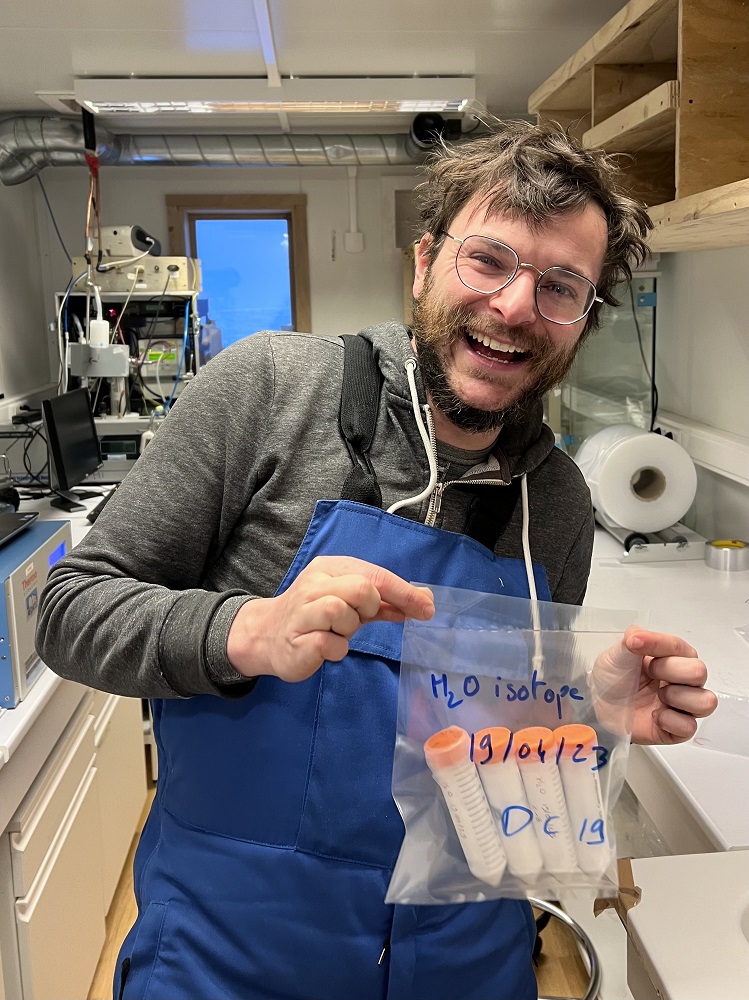
3.50pm, back to the station with some pretty incredible colours. It is -82°C, we are exhausted.


